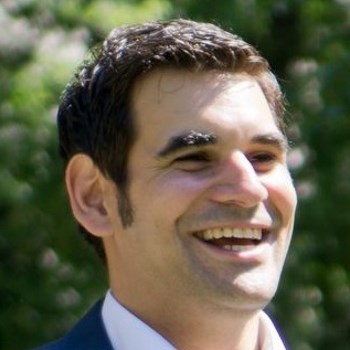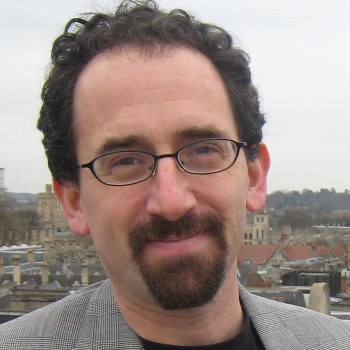Links to external sources may no longer work as intended. The content may not represent the latest thinking in this area or the Society’s current position on the topic.
Breakdown of ergodicity in quantum systems: from solids to synthetic matter
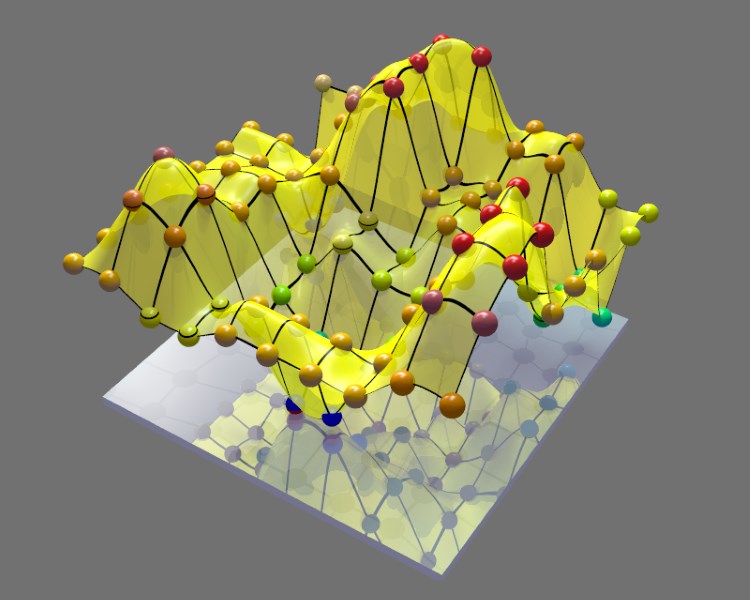
Scientific discussion meeting organised by Professor Sir Michael Pepper FREng FRS, Dr Arijeet Pal, Dr Zlatko Papic, Dr Ulrich Schneider and Professor Steven Simon
Ergodic systems lie at the heart of statistical physics since they reach thermal equilibrium and 'forget' their initial conditions, thereby allowing for coarse-grained classical descriptions. Recently, non-ergodic quantum many-body systems, which fail to thermalise and decohere completely, came into focus. This interdisciplinary meeting addressed their fundamental challenges and experimental realisations, including many-body localisation and other novel, non-classical long-time behaviour.
The programme, speaker abstracts, and biographies of the organisers and speakers is available below. Recorded audio of the talks are also available below. Meeting papers will be published in a future version of Philosophical Transaction A.
This meeting was followed by a related satellite meeting 'Future directions in non-ergodic dynamics in quantum systems' at the Royal Society at Chicheley Hall on 8-9 February 2017.
Enquiries: Contact the Scientific Programmes team
Organisers
Schedule
Chair

Professor Dan Shahar, Weizmann Institute, Israel

Professor Dan Shahar, Weizmann Institute, Israel
Professor Dan Shahar obtained his PhD from Princeton University working on the quantum Hall effect under the supervision of Dan Tsui. Following a postdoc in the same group Shahar joined the Weizmann Institute where he has been running a low-temperature transport research lab since. His group have recently been focused on the study of highly disordered superconductors.
| 09:05 - 09:55 |
Many-body localization: answers and questions
In considering the phenomenon of localization in isolated many-body quantum systems, it is important to get past perturbative analysis, as rare regions with weak disorder (Griffiths regions) have the potential to spoil localization. In his talk, John describes a non-perturbative construction of local integrals of motion (LIOMs) for a weakly interacting spin chain in one dimension. This leads to a proof that many-body localization follows from a physically reasonable assumption that limits the extent of level attraction in the statistics of eigenvalues. In a Kolmogorov-Arnold-Moser-style construction, a sequence of local unitary transformations is used to diagonalize the Hamiltonian by deforming the initial tensor-product basis into a complete set of exact many-body eigenfunctions. John discusses prospects for the level-statistics problem by reviewing recent work elucidating the way randomness localizes eigenfunctions, smooths out eigenvalue distributions, and produces eigenvalue separation. The construction breaks down in higher dimensions, as one can no longer ensure that interactions involving the Griffiths regions are much smaller than the typical energy-level spacing for such regions. Is this an artefact of the method or is there a real barrier to exact many-body localization in dimensions 2 or more? 
Professor John Imbrie, University of Virginia, USA

Professor John Imbrie, University of Virginia, USAThroughout his career, Professor John Imbrie has been interested in mathematical work that sheds light on important questions in theoretical physics. He received his PhD in Physics from Harvard in 1980. He continued there as a Junior Fellow in the Society of Fellows before joining the faculty in 1984. During this time he worked on renormalization group methods in gauge theories and on disordered systems such as the random-field Ising model. In 1991, he became Professor of Mathematics at the University of Virginia. He obtained significant results on the self-avoiding walk, directed polymers, and branched polymers. He has also developed mathematical models of ice-age cycles. In recent years, he has been working on mathematical problems in the theory of localization in single-body and many-body disordered quantum systems. |
|
|---|---|---|
| 09:55 - 10:45 |
Probing many-body localisation from an ultracold atom perspective
A fundamental assumption in statistical physics is that generic closed quantum many-body systems thermalise under their own dynamics. Recently, the emergence of many-body localised (MBL) systems has questioned this concept, challenging our understanding of the connection between statistical physics and quantum mechanics. In his talk, Immanuel reports on several recent experiments carried out in his group on the observation of Many-Body Localisation in different scenarios, ranging from 1D fermionic quantum gas mixtures in driven and undriven Aubry-André type disorder potentials and 2D systems of interacting bosons in 2D random potentials. It is shown that the memory of the system on its initial non-equilibrium state can serve as a useful indicator for a non-ergodic, MBL phase. Furthermore, he will present new results on the slow relaxation dynamics in the ergodic phase below the MBL transition, where he finds evidence for Griffith’s type slow dynamics. His group’s experiments represent a demonstration and in-depth characterisation of many-body localisation, often in regimes not accessible with state-of-the-art simulations on classical computers. 
Professor Immanuel Bloch, Ludwig-Maximilians-Universität & Max Planck Institute of Quantum Optics, Munich, Germany

Professor Immanuel Bloch, Ludwig-Maximilians-Universität & Max Planck Institute of Quantum Optics, Munich, GermanyImmanuel Bloch is scientific director at the Max Planck Institute of Quantum Optics (Garching) and holds a chair for experimental physics at the Ludwig-Maximilians-University (Munich). His scientific work is among the most highly cited in the field of quantum physics and has helped to open a new interdisciplinary research field at the interface of atomic physics, quantum optics, quantum information science and solid state physics. For his research, he has received several national and international prizes, among them the Senior Prize for Fundamental Aspects of Quantum Electronics and Optics of the European Physical Society, the Körber European Science Prize and the Harvey Prize. |
|
| 10:45 - 11:15 | Coffee break | |
| 11:15 - 12:05 |
Many body localization and glassiness in disordered quantum systems
Antonello discusses the interplay of two phenomena arising in disordered quantum spin systems: the appearance of a glassy phase, and the complete suppression of transport due to many-body localization. He will review work done (analytical and numerical) on some models, under various approximations, and try to sketch a universal physical picture for how the two dynamical phases interplay. Antonello will also comment on the implications of this picture for the performance of quantum computers and in particular those implementing the quantum adiabatic algorithm. 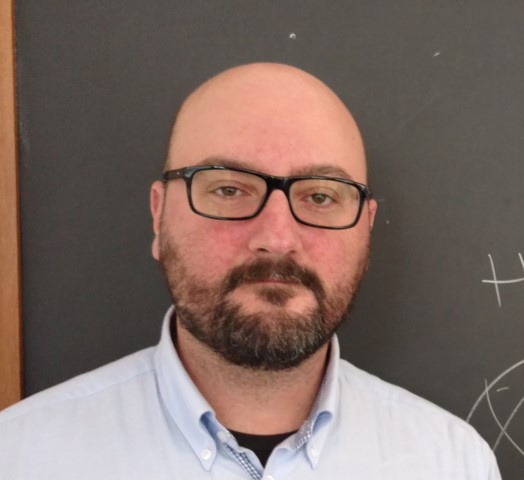
Professor Antonello Scardicchio, International Centre for Theoretical Physics, Italy

Professor Antonello Scardicchio, International Centre for Theoretical Physics, ItalyAntonello Scardicchio received his PhD from the Massachusetts Institute of Technology (Cambridge, MA) in 2006. He served as a Junior Fellow of the Princeton Center for Theoretical Physics (Princeton University, Princeton, NJ) from 2006 to 2008. Scardicchio has been at the Abdus Salam ICTP in Trieste since January 2009; and is currently a visiting scholar at Columbia University, Princeton University and CUNY. Antonello worked on fluctuation-induced forces and nuclear and particle Physics before becoming interested in disordered quantum systems, which is now his main field of interest. He is currently working on the theory of many-body localization and on the implications of such phenomenon for the design and performance of quantum computers. |
|
| 12:05 - 12:55 |
Exploring quantum phase slips in 1D bosonic systems
Quantum phase slips, i.e., the primary excitations in one-dimensional superfluids at low temperature, have been well characterized in most condensed-matter systems, with the notable exception of ultracold quantum gases. Chiara presents the experimental investigation of the dissipation in one-dimensional Bose superfluids flowing along a periodic potential, which show signatures of the presence of quantum phase slips. In particular, by controlling the velocity of the superfluid and the interaction between the bosons, the D’Errico group are able to drive a crossover from a regime of thermal phase slips into a regime of quantum phase slips. Achieving a good control of quantum phase slips in ultracold quantum gases requires to keep under control other phenomena such as the breaking of superfluidity at the critical velocity or the appearance of a Mott insulator in the strongly correlated regime. Chiara presents the group’s current results in these directions. 
Dr Chiara D'Errico, Istituto Nazionale di Ottica - CNR and LENS, Italy

Dr Chiara D'Errico, Istituto Nazionale di Ottica - CNR and LENS, ItalyIn 2005, Dr Chiara D'Errico completed her Master’s degree in Physics at the University of Florence. D’Errico obtained her PhD in Physics at the University of Florence in 2009. It was at the University of Florence that she completed a post-doc fellowship, and then between 2009 and 2010 completed another fellowship in the Research Laboratory of Electronics at Massachusetts Institute of Technology. Between 2010 and 2012, D’Errico completed another post-doc fellowship at the European Laboratory for Non Linear Spectroscopy (LENS), Florence. Since April 2012, Chiara has been a researcher at the Istituto Nazionale di Ottica (INO)-CNR, working on the project ‘Probing novel phases of matter with artificial quantum simulators: the interplay between disorder and correlations in equilibrium and out-of-equilibrium many-body quantum lattices’. |
Chair
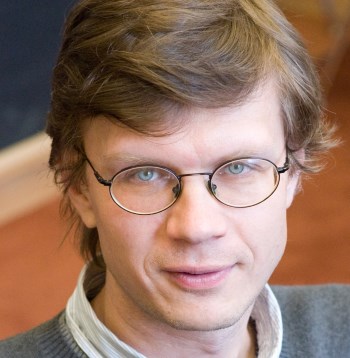
Professor Mikhail Lukin, Harvard University, USA

Professor Mikhail Lukin, Harvard University, USA
Mikhail Lukin received the Ph.D. degree from Texas A&M University in 1998. He has been on a faculty of Harvard Physics Department since 2001, where he is currently George Vasmer Leverett Professor of Physics, and a co-Director of Harvard-MIT Center for Ultracold Atoms and of Harvard Quantum Initiative in Science and Engineering. His research interests include quantum optics, quantum control of atomic and nanoscale solid-state systems, quantum metrology, nanophotonics, and quantum information science. He has co-authored over 400 technical papers and has received a number of awards, including the Alfred P. Sloan Fellowship, David and Lucile Packard Fellowship for Science and Engineering, NSF Career Award, Adolph Lomb Medal of the Optical Society of America, AAAS Newcomb Cleveland Prize, APS I.I.Rabi Prize, Vannevar Bush Faculty Fellowship, Julius Springer Prize for Applied Physics, and the Willis E. Lamb Award for Laser Science and Quantum Optics. He is a fellow of the OSA, APS, and AAAS and a member of the National Academy of Sciences.
| 14:30 - 15:20 |
The effect of non-Abelian symmetries on many-body localization and thermalization
Many-body localization (MBL) provides the only known robust mechanism to break ergodicity and avoid thermalization in quantum many-body systems. Many-body localized systems are characterized by emergent local integrability and low, area-law entanglement of excited eigenstates. It is well-known that symmetries of the system modify single-particle, Anderson localization in non-trivial ways. Do symmetries have a significant effect on MBL and thermalization in many-body systems? In this talk, Abanin will focus on disordered systems with continuous, non-Abelian symmetries, one example being the random Heisenberg model, which has SU(2) symmetry. The symmetry dictates that the system cannot have a complete set of local integrals of motion, and therefore cannot be MBL in the conventional sense. Abanin will describe a potential non-ergodic phase, which is consistent with the symmetry. In this phase, the eigenstates have sub-thermal, logarithmic scaling of entanglement with the system size. Abanin will introduce a method for probing the stability of non-ergodic many-body phases, and apply it to the SU(2)-symmetric case, finding that the non-ergodic phase becomes unstable due to proliferation of multi-spin resonances. Such processes are missed by other approaches, such as strong-disorder renormalization group, but are crucial for thermalization in these systems. He will discuss the case of discrete non-Abelian groups, and will speculate about the possibility of ergodicity-breaking phases beyond conventional many-body localization. 
Professor Dmitry Abanin, University of Geneva, Switzerland

Professor Dmitry Abanin, University of Geneva, SwitzerlandProfessor Dmitry Abanin obtained his PhD degree at MIT in 2008, working on graphene and quantum transport with Professor Levitov. After 3 years as PCTS fellow and 1 year at Harvard, he joined Perimeter Institute as an assistant professor in 2013. In 2015, Abanin started as a full professor of theoretical physics at the University of Geneva. Currently, Abanin is interested in non-equilibrium phenomena in quantum many-body systems, in particular, he works on thermalization, many-body localization, and periodically driven systems. |
|
|---|---|---|
| 15:20 - 16:10 |
Properties of disordered systems away from localization
An important point in characterizing a given phase, for instance a many-body localized one, is to understand how it arises from neighbouring phases and how it breaks down under external influence. Znidaric will discuss three different ways of failing to be localized: an insufficient disorder strength, disorder with symmetries, and coupling to Markovian environment. If disorder is too small transport properties can be very rich, ranging from subdiffusion to superdiffusion. If disorder is strong but has symmetries, an example being the Hubbard model with charge disorder realized in experiments, the system also fails to be fully localized. Finally Znidaric will briefly mention classical-like break down of localization due to coupling to environment. 
Dr Marko Znidaric, University of Ljubljana, Slovenia

Dr Marko Znidaric, University of Ljubljana, SloveniaMarko Znidaric obtained his PhD in 2004 at University of Ljubljana, exploring stability of quantum dynamics and Loschmidt echoes. During his postdoctoral research at University of Ulm he became interested in quantum information, in particular in quantum adiabatic algorithms and applications of random matrix theory to quantum information. After spending a year as a vising professor at UNAM, Mexico, he presently works as an associate professor at University of Ljubljana. His recent research interests include nonequilibrium physics of quantum many-body systems with an emphasis on transport properties of low dimensional systems. |
|
| 16:10 - 16:40 | Tea break | |
| 16:40 - 16:30 |
Small baths in many-body localization

Dr Anushya Chandran, Boston University, USA

Dr Anushya Chandran, Boston University, USADr Anushya Chandran obtained her PhD in physics from Princeton University (USA) in 2013. She then joined the Perimeter Institute (Canada) as a postdoctoral fellow (2013–2016). She is currently an assistant professor in the physics department at Boston University. Her research interests include the far-from-equilibrium dynamics of correlated quantum matter and the role of entanglement in many-body quantum physics. She is currently working on the theory of many-body localization and ultra-fast spectroscopic probes. |
| 09:00 - 09:50 |
Consequences of MBL-type and Yang-Baxter-type integrability for observable quantum dynamics
The easiest systems in which to understand failures of ordinary thermalization are those in which there exists an infinite set of independent conserved quantities. This includes many-body localized systems, at least in one spatial dimension, and also integrable systems of Yang-Baxter type. This talk discusses consequences of the conserved quantities in both cases, with a focus on finding unconventional hydrodynamical descriptions for time evolution from various initial conditions. In the Yang-Baxter case, there are a few examples of interacting spinless fermions in which exact results are possible via integrability even far from equilibrium, and there are proposals that essentially all of the long-time dynamics may be captured in an effectively classical description. 
Professor Joel Moore, University of California, Berkeley, USA

Professor Joel Moore, University of California, Berkeley, USAJoel Moore is Professor of Physics at University of California, Berkeley. He is one of the leaders in the study of the topological aspects of electronic physics, particularly known for his work with Balents on strong topological insulators and his work with Orenstein and Vanderbilt on magnetoelectric couplings and optical responses induced by geometric and topological terms in various material classes. He has also obtained significant results on nonequilibrium dynamics of interacting quantum systems, significantly elucidating the role of quantum entanglement in these phenomena. |
|
|---|---|---|
| 09:50 - 10:40 |
Non-thermalization in trapped atomic ion spin chains
Trapped atomic ions are a versatile platform for realizing interacting quantum spin models and studing quantum nonequilibrium phenomena. When spin-dependent optical dipole forces are applied to a collection of trapped ions, an effective long-range quantum magnetic interaction arises, with the potential for reconfigurable and tunable graphs. Early experiments displayed equilibrium properties of transverse Ising models with up to 25 trapped ion spins along with spectroscopic studies of excited states and quench dynamics. In this talk, Dr Hess will discuss recent studies of many-body non-thermalization processes in this system, including a different form of prethermalization and an observation of many body localization (MBL) with a programmbly disorderd Hamiltonian. Finally, by applying a periodically driven Floquet Hamiltonian tempered with a MBL Hamiltonian, he will discuss the observation of a discrete time crystal, characterized by the stable appearance of a subharmonic response of the system to the drive. 
Dr Paul Hess, Joint Quantum Institute and University of Maryland, USA

Dr Paul Hess, Joint Quantum Institute and University of Maryland, USAPaul Hess is currently a postdoctoral researcher at the Joint Quantum Institute (JQI) at the University of Maryland. There he studies many-body physics using systems of trapped atomic ions as part of Christopher Monroe’s trapped ion quantum information group. He completed his Ph.D. at Harvard University in 2014 as part of the ACME collaboration, where he used a beam of polar molecules to carry out the most precise search to date for the electron’s permanent electric dipole moment. At JQI, he is interested in studying how quantum effects like entanglement and topology can lead to unique and useful properties in strongly interacting many-body systems. He has been awarded the Department of Energy’s Office of Science Graduate Fellowship to support his precision measurement research, and the Harold T. White Prize in teaching from Harvard University. |
|
| 10:40 - 11:10 | Coffee break | |
| 11:10 - 12:00 |
Many-body localization: entanglement and efficient simulations
Many-body localization (MBL) occurs in isolated quantum systems when Anderson localization persists in the presence of finite interactions. The entanglement turns out to be a very useful concept to study the nature of the MBL phase: it helps to form a conceptual understanding and guides the development of new numerical tools. First, Pollmann discusses how the dynamics of entanglement and mutual information help to characterize the MBL phase. Second, he will introduce a variant of the density-matrix renormalization group (DMRG) method that obtains individual highly excited low-entanglement eigenstates of MBL systems to machine precision accuracy at moderate to large disorder. This DMRG-X method explicitly takes advantage of the local spatial structure and the low entanglement which is characteristic for MBL eigenstates. 
Professor Frank Pollmann, Technical University Munich, Germany

Professor Frank Pollmann, Technical University Munich, GermanyFrank Pollmann’s research focuses on a variety of problems in the field of solid state theory. His main focus lies on the study of collective phenomena which arise due to quantum mechanical effects in systems of correlated electrons. He studied physics at Technical University Braunschweig and the Royal Institute of Technology in Stockholm. After completing his PhD at the Max Planck Institute for the Physics of Complex Systems (MPIPKS), Dresden, in 2006, he worked as a postdoctoral researcher at the University of California, Berkeley. From 2011 he headed a junior research group at the MPIPKS. In 2016 he took up an associate professorship appointment at the Technical University Munich. |
Chair

Professor Ehud Altman, University of California Berkeley, USA

Professor Ehud Altman, University of California Berkeley, USA
Professor Ehud Altman received his PhD from the Technion, Haifa in 2002. He was then a postdoctoral fellow at Harvard university for three years before joining the faculty of the Weizmann Institute of Science as a Yigal Alon fellow in 2005. He was promoted to the rank of Associate professor there in 2011. In 2010 he was awarded the young investigator prize from the Israel Physical Society and the Krill prize of the Wolf foundation. During the academic year 2012-2013 he was a Miller visiting professor at UC Berkeley. He joined the Physics department of UC Berkeley as a professor in the summer of 2016.
| 13:00 - 14:20 |
Quantum dynamics in disordered dipolar systems
Mikhail will describe two recent experiments aimed at exploring new phases in quantum dynamics of strongly interacting systems away from equilibrium. The first involves slow, critical thermalization of disordered, dipolar spin systems in black diamond. This system is used for observation of discreet time crystals in a periodically driven ensemble of a million strongly interacting electronic spins. Mikhail also reports on observation of novel types of correlations and crystalline order formed in quantum dynamics of ultra-cold atomic arrays that are assembled atom-by-atom and entangled via excitation into the Rydberg states. 
Professor Mikhail Lukin, Harvard University, USA

Professor Mikhail Lukin, Harvard University, USAMikhail Lukin received the Ph.D. degree from Texas A&M University in 1998. He has been on a faculty of Harvard Physics Department since 2001, where he is currently George Vasmer Leverett Professor of Physics, and a co-Director of Harvard-MIT Center for Ultracold Atoms and of Harvard Quantum Initiative in Science and Engineering. His research interests include quantum optics, quantum control of atomic and nanoscale solid-state systems, quantum metrology, nanophotonics, and quantum information science. He has co-authored over 400 technical papers and has received a number of awards, including the Alfred P. Sloan Fellowship, David and Lucile Packard Fellowship for Science and Engineering, NSF Career Award, Adolph Lomb Medal of the Optical Society of America, AAAS Newcomb Cleveland Prize, APS I.I.Rabi Prize, Vannevar Bush Faculty Fellowship, Julius Springer Prize for Applied Physics, and the Willis E. Lamb Award for Laser Science and Quantum Optics. He is a fellow of the OSA, APS, and AAAS and a member of the National Academy of Sciences. |
|
|---|---|---|
| 14:20 - 15:05 |
Quantum disentangled liquid states and the half filled Hubbard model
Eigenstates at finite energy densities in integrable models are not necessarily thermal. This permits the realization of exotic states of matter as stationary states after quantum quenches. Essler will consider the question whether the recently proposed “quantum disentangled liquid”, in which thermalized and non-thermalized degrees of freedom are postulated to co-exist in finite energy density eigenstates, could be realized in strong coupling limits of integrable and possibly even non-integrable models. Essler will focus on the half-filled Hubbard model with strong repulsive interactions. 
Professor Fabian Essler, Oxford University, UK

Professor Fabian Essler, Oxford University, UKFabian H.L. Essler is a professor of theoretical physics at Oxford University. Professor Essler has long-standing interests in low dimensional many-particle quantum systems, integrable models and classical driven diffusive systems. He has co-authored a monograph on the exact solution of the one dimensional Hubbard model. His recent research has focussed on the non-equilibrium dynamics in isolated integrable many-particle quantum systems, as well as the effects of weak integrability breaking perturbations. |
|
| 15:05 - 15:35 | Tea break | |
| 15:35 - 16:25 |
Dynamical manifestations of the loss of ergodicity in many-body quantum systems
Results are presented for the short- and long-time dynamics of isolated many-body quantum systems with two-body interactions. The decay of the survival probability at short times can be very fast, even faster than exponential when the system is strongly perturbed out of equilibrium. At long times, however, the evolution of any quantum system with a bounded spectrum slows down and shows a power-law decay. This occurs for integrable, chaotic, interacting, non-interacting, disordered, and clean systems. The value of the power-law exponent reflects the properties of the spectrum, the structure of the initial state, and the number of particles that interact simultaneously. An exponent greater than or equal to 2 occurs when the energy distribution of the initial state is ergodically filled, which guarantees thermalization. Exponents smaller than 1 indicate lack of ergodicity. The transition from the ergodic to the nonergodic phase is also manifested in the disappearance of the correlation hole, which refers to a dip of the survival probability below the saturation point. Overall, the survival probability provides more information about the system than the von Neumann entanglement entropy or the Shannon information entropy. 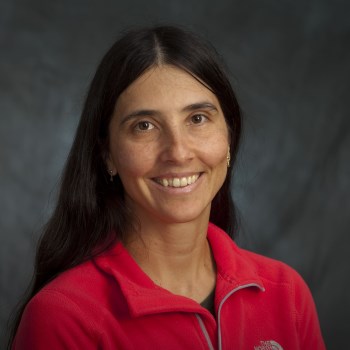
Professor Lea Santos, Yeshiva University, USA

Professor Lea Santos, Yeshiva University, USALea F. Santos is a Professor of Physics at Yeshiva University. She has a Ph.D. in theoretical physics from the University of São Paulo and postdoctoral experiences at Yale University, Michigan State University, and Dartmouth College. She is at the editorial board for New Journal of Physics and Physical Review E. She has worked for the APS Forum of Physics and Society, APS LeRoy Apker Award, and APS Metropolis Award. Her accolades include: Simons Fellow in Theoretical Physics, Outstanding Referee for the APS Journals, NSF CAREER Award, Cottrell College Science Award, Outstanding Junior Faculty Member Award, Cottrell and KITP Scholar, member of the U.S. delegation to the Third IUPAP International Conference on Women in Physics, and fellowships from the Brazilian and New Zealand governments. |




